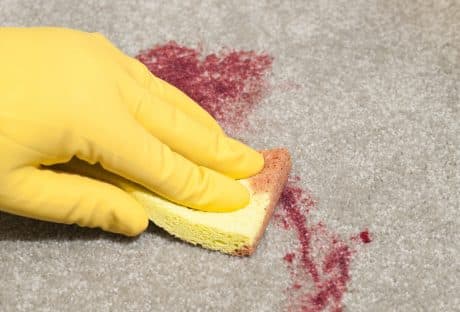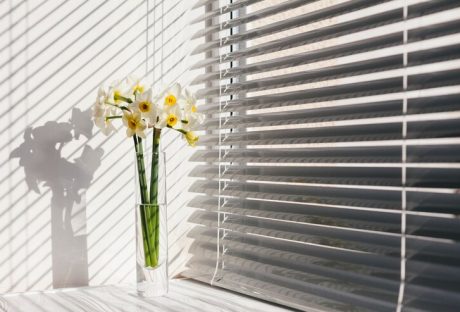It is highly important to clean your mattress on a regular basis. This is because mattresses could become a breeding ground for dust mites, stains, and bad odor. None of which we would want in our homes. Since we spend about a third of our lives sleeping, it’s only proper that the mattress we’re sleeping on is clean.
But mattress cleaning may prove to be an intimidating task, especially if you do not know what to do. Do you wash it or dry it out? What cleaning agents will you use? Are you using the right cleaning techniques? The questions are endless – and overwhelming, too. After all, no one would want to damage an expensive mattress.
To help you out, we have compiled a few tips to make the mattress cleaning experience a lot less daunting. Read on and find out.
Suck Up the Dirt :
Vacuuming your mattress is perhaps one of the easiest ways available to clean it. It may also be one of the most convenient ways. First remove your pillow top, sheets, pillows, and blankets. After doing so, you may then proceed to vacuum your mattress. This will:
Remove any crumbs that may have accumulated from late-night snacking sessions or from movie marathons.
- Take off any pet hair that may have stuck to the mattress after letting your pet sleep in the same bed as you.
- Remove any dust that has formed since the last time you took the time to clean your mattress.
Nearly every house would have a vacuum cleaner for general cleaning purposes. If yours does not, then consider getting one, as it is quite a good investment. It makes cleaning not only the rooms of your house a breeze, but it is a big help in cleaning your mattress as well, keeping it as comfortable as possible.
Easy Spot Cleaning :
The next thing you can do to clean your mattress is to spot clean it. The type of stains present on a mattress will vary from person to person. Likewise, the best ways to clean these stains vary as well. Here is a quick list of what you should use when you get an unsightly stain on your mattress:
- Water: Water is a safe bet. It is cheap and safe to use on absolutely everything. It is good as an immediate treatment to prevent stains from setting. It also lessens the effect of dyes but is not 100% effective.
- Detergents: These can be used for most situations, especially for grease stains. Commonly, people have detergents for laundry and dishwashing at their disposal. You must be careful with the latter, as it could damage the fabric on the mattress.
- Salt: This one can be found in almost every household. It is effective in removing sweat or deodorant stains. It is also good in lessening red wine and bloodstains.
- Vinegar or Lemon Juice: These two are amazing tools for removing coffee and tea stains. People have also found them effective against grass stains as well as tape and glue residue.
- Bleach: Bleach is effective in removing dyes. This means that it is a good bet for make-up and grass stains. This should be used in moderation, as it can damage more delicate mattresses.
People also rely on a combination of hydrogen peroxide, liquid detergent, and baking soda. Simply spray the mixture on a stain and spot clean away. Another easy combination is that of lemon juice and salt. Spread this on a stain and leave it on for at least half an hour. Afterward, just wipe it off.
Remove Foul Odors :
The third step we suggest for the mattress-cleaning process is deodorizing. There are multiple, easy ways for you to do this.
- Air Dry: Perhaps the easiest and most convenient way to do when you want to deodorize. Simply leave it in the heat of the sun for a couple of hours. This will remove any foul odors and naturally kill bacteria as well.
- Baking Soda: Simply sprinkle this stuff on your mattress and leave it be for a couple of hours. It is a natural deodorizer that also kills germs. After it has done its job, just vacuum off the excess on the mattress.
- Lavender: A bit of an extra step, but has proven to be worth it. It does not only remove unwanted odors from your mattress, it also adds a relaxing scent that will help you get a better night’s sleep every night.
While each one of these suggestions is effective in their own right, doing all three would help you achieve better sleep. It may take some more effort on your part, but it will all be worth it.
Clean Your Sheets :
Washing your sheets is another important step in this process. It’s not enough that your mattress is clean; your sheets should be, too. It is always a good idea to clean your sheets regularly as this would prevent stains from seeping through to the mattress. This will also remove unsightly stains and foul odors. Together with a clean mattress, this will help you wake up more relaxed and energized.
When doing this, it is important to remember the following :
- The washing machine is your best friend when it comes to washing bulky sheets. A dryer would also help deodorize and kill bacteria with its heat.
- Read care labels so that you do not cause damage to your sheets especially on sensitive fabrics. Some detergents are very strong and may actually do more harm than good. Some may even make the stain spread instead of removing it.
- It would not hurt to use a scented detergent to wash sheets. Just know how much and which brand to use. As mentioned before, lavender is a good scent for some more peaceful sleep.
It is recommended that sheets be washed at least once a week. If this is not possible, then at least make sure to change them.
Protect Your Mattress :
Lastly, we would recommend you to protect your mattress. A lot of manufacturers offer mattress covers nowadays. They help prevent future stains from getting on the mattress itself. Not only that, some of them even make the bed more comfortable. As an added bonus, they can easily be thrown in the washing machine with the sheets.
And On That Note…
While this task may seem like it is too much, it really is not. This also has a lot more benefits than just removing stains. If you haven’t tried doing it and you’re scared of trying, ask someone who can help you out. Additionally, a wealth of information is available on the internet. Sometimes, the answers to your questions are a mere mouse click away.
Cleaning your mattress on a regular basis is important. This would help keep germs at bay and remove foul odors. This will also increase your mattress’s longevity. Your mattress will keep you comfortable for as long as possible. All of this would lead to you getting a better night’s sleep in the long run.
Take the first step today and you will thank yourself later. You invested quite well on that mattress; make that investment well worth it. Take good care of your mattress and it will take good care of you.
Read More :






















